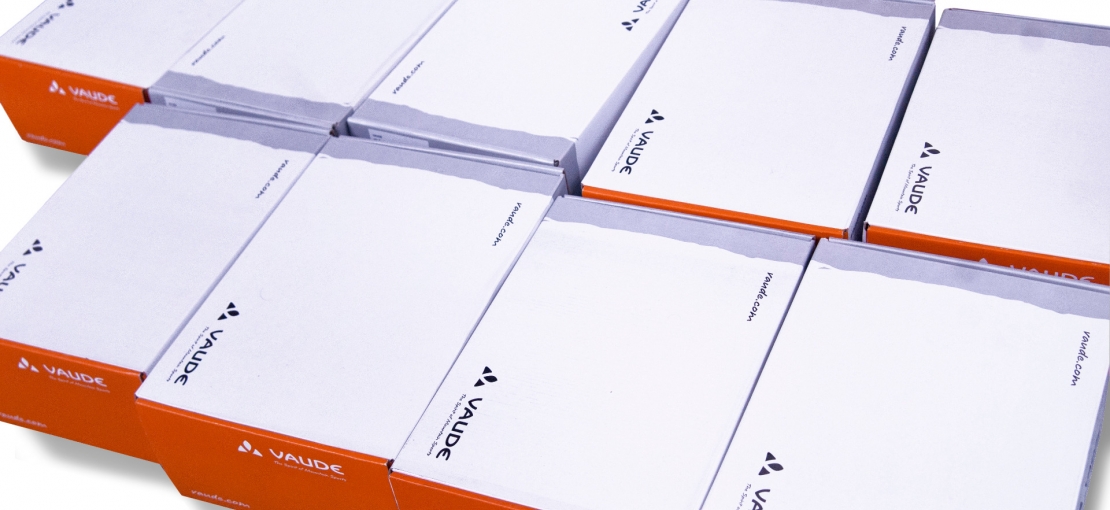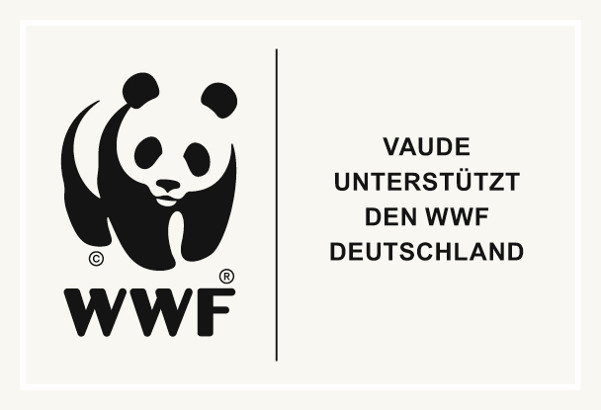
Mountains of rubbish and polluted beaches
The plastic bag problem
Plastic bags – they’re everywhere. And we are a part of the problem. In order to keep our products safe and clean until they reach your favorite store or your doorstep by post, our products have to be packed – in plastic bags.
We know that this is a major problem and we’re still wracking our brains to find a good solution. If you have one – let us know!
Wanted: flash of inspiration
The best packaging is that which we simply don’t use. If it were just that easy…
We have already long done away with plastic shopping bags in VAUDE stores. If you really need a bag, you can buy a paper version.
All sales packaging for our VAUDE products have also already been eliminated wherever possible and optimized from an ecological perspective. This includes shoe boxes, all labels or cardboard hangers for gloves and other smaller items. We use recycled paper or cardboard for these and avoid the use of plastic as far as possible.
Protection from damage is essential
The problem is packaging for transport, above all – those vexed clear plastic bags. Each individual product is packed in one…
- to protect it from moisture, mold and damage during transport;
- because the shipping companies and warehouse logistics need them, such as for barcode labels;
- because many dealers demand them from us in order to protect the product during their processes and to simplify things.
At the moment, we can’t just eliminate them.
VAUDE Packaging Guideline
vNevertheless, in 2014 we implemented a packaging guideline for our suppliers with clear instructions for maximum sizes, materials allowed and mandatory labeling that enables us to sort and recycle the packaging.
This guideline is a component of our purchasing contract and is mandatory for all VAUDE products. We monitor adherence with random testing at our warehouse.
The VAUDE Packaging Guideline is available for download here
What do you say?
If we were completely successful in implementing all of the “shoulds” in the guideline, we would already be a huge step ahead. These include, for example, a recycling percent of at least 30% for all plastic bags.
For technical reasons, however, this degree of recycled content means that the bags are no longer transparent, but milky. Is this a problem? We don’t know! We are currently in talks with our stores and logistics partners to find out if these bags are acceptable.
Contrary to what one might think, recycled materials are almost always more expensive than new materials. This also holds true for packaging.
Or how about re-used bags?
What do you think? Let us know! Just use the mail link on this page.
Tonnes of packaging materials
The global production of plastic has increased by a factor of 20 over the past 50 years. From the 80 million tonnes of plastic packaging produced around the world each year, a shocking 32% ends up as pollution.
The highest amount by far is in Asia. There are simply not enough regulated waste disposal systems in which plastics are collected and meaningfully recycled – if only as a fuel source for generating electricity or heat.
Even the plastic industry has recognized the problem and is looking at how it can contribute to a solution.
We’re working together with the WWF and the Federal Association of German Sports Article Industry to reduce the use of plastic packaging and, ideally, to eliminate it altogether. Furthermore, we also want to raise the awareness of our suppliers in Asia of the problem and work with them and the WWF together to find tangible solutions for collecting and recycling plastic on site.
How much packaging material VAUDE puts into circulation:
Transport packaging for delivery of VAUDE products to retailers (identified as newly procured materials, inventory adjusted)
|
|
2015 | 2016 |
|---|---|---|
|
Cardboard, no less than 75% recycled paper |
237 tonnes |
248 tonnes |
|
Shrink foil |
3.6 tonnes |
4.5 tonnes |
Sales packaging for products manufactured at our Obereisenbach location (identified from newly procured materials, inventory-adjusted)
|
|
2015 | 2016 |
|---|---|---|
|
Cardboard packaging |
17 tonnes |
14 tonnes |
|
Polybags |
No data available |
0.4 tonnes |
Sales packaging for all other VAUDE products (determined according to the packing ordinance on the basis of the consumption according to the piece list and estimated)
|
|
2015 | 2016 |
|---|---|---|
|
Paper, cardboard and cardboard packaging |
20 tonnes |
19 tonnes |
|
Plastics / foils |
5 tonnes |
5 tonnes |
|
Natural materials such as cotton cords, etc. |
1 tonne |
0.5 tonnes |
And what about biodegradable packaging?
Biodegradable bio-plastics would be sensational for packaging: all the advantages that plastic bags offer for protection and cleanliness, but without the problem of non-decomposable pollution. You can read about the conflicts and problems here
We avoid the use of "compostable" plastics on the recommendation of the German Federal Environment Agency (Umweltbundesamt) for disposable items such as packaging. Although these are theoretically biodegradable, they don’t actually decompose under normal conditions but only under industrial composting conditions with high temperatures and without an oxygen supply.
They are also problematic for biogas production. In most cases, they decompose much slower than organic waste and end up causing blockages at conventional biogas plants where they have to be carefully removed from the compost and disposed of.
In addition, with the current state of technology, they still require more energy to produce than new plastics. A high proportion of recycled material would therefore be the most environmentally friendly solution.
How you can help:

As a cooperation partner of the WWF Germany, we would like to pass on their recommendations:
- Avoid plastic packaging, plastic bags and disposable items. Put garbage where it belongs.
- Avoid toothpaste and cosmetics with microplastic beads.
- Become informed about the toxins in plastics and avoid products made of PVC (polyvinyl chloride) and PC (polycarbonate).

»The textile industry carries an enormous responsibility as one of the major contributors to environmental pollution with plastic packaging. We are taking our cooperation partner VAUDE up on its promise and are working together on ideas to curb the problem, above all in the textile supply chain in Asia.«
| GRI: | G4-DMA Materials |
| GRI: | G4-EN1 |
| GRI: | G4-EN2 |
| GRI: | G4-EN27 |






